Visiting Chichen Itza - and enjoying it!
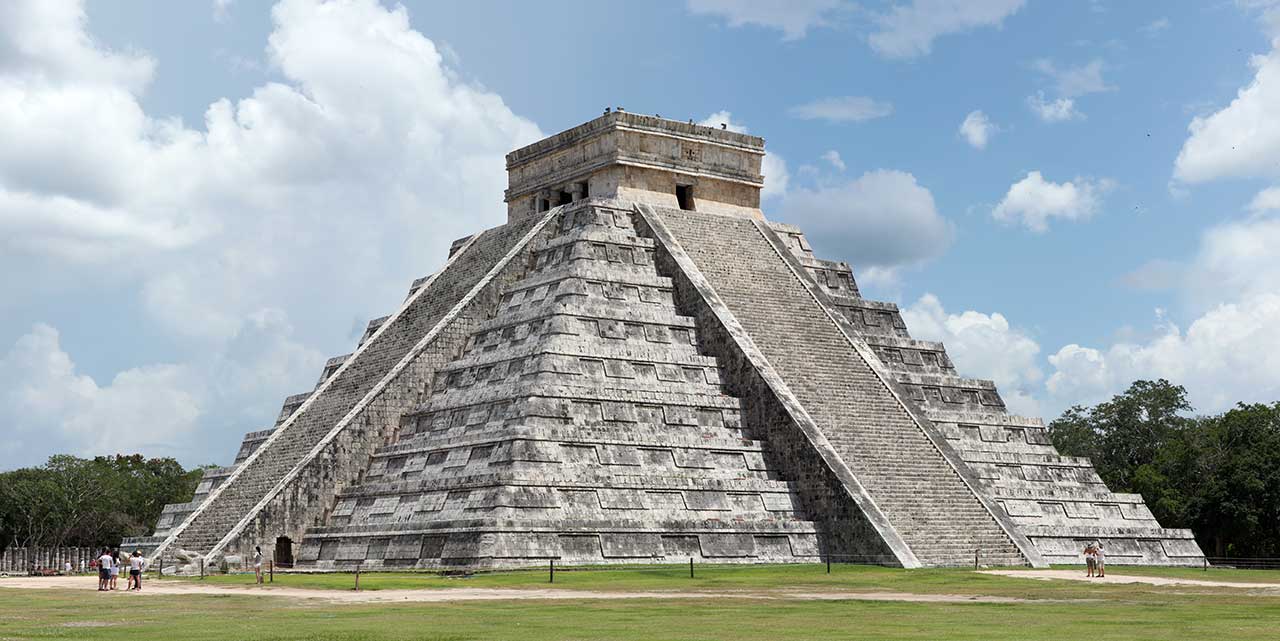
Chichén Itzá is the most recognizable and famous of all the Mayan Ruins in the Yucatan. Understandably, it has become one of the most iconic archeological ruins in the whole of Mexico. If you’ve never visited a Mayan ruin before, don’t worry. Here’s the perfect guide to visiting Chichen Itza and enjoying it.
Most advertising for travel in the Yucatan features an image of Chichén Itzá! These Mayan ruins are a UNESCO world heritage site and in 1988 Chichén Itzá was declared one of the new Seven Wonders of the World.
It’s the first Mayan ruin we visited on our first trip to Mexico over a decade ago and we loved it!
Its proximity to the Riviera Maya, and the ease of coach tours from the large hotels there, have made it famous worldwide. If you’re staying at one of the all-inclusive hotels or resorts, this is probably your best bet to see a Mayan ruin.
Being world-famous doesn’t always mean people know anything about it. Don’t miss out. If you are thinking about visiting Chichen Itza, check out the following guide so you can avoid the pitfalls and have a wonderful time!
How to get to Chichén Itzá?
Chichén Itzá is in the Yucatan about 122 miles (or 197 km) from Cancun, which is roughly two and a half hours by coach. Cancun day trips to Chichén Itzá are big business!
Merida is about 75 miles (or 122 km) from Chichén Itzá to the west and the trip should take between one and a half and two hours, subject to traffic.
Visiting Chichen Itza from Valladolid is 28 miles (45 km) or about 50 minutes by car.
Your options for Visiting Chichen Itza
You can book with many of the tour companies found in the major Riviera Maya resort towns like Cancun, Playa del Carmen, and Tulum. These companies normally provide luxury coaches and the fare should include entrance costs for visiting Chichen Itza.
Many will include extra stops in the tour, such as the famous Ik Kil cenote (which we found to be awesome!). You might stop at an ‘authentic’ restaurant such as the Hacienda Chichen Resort or even make a stop in Valladolid.
If you’re a bit more adventurous, you’ll be able to use the Mayan train. Trips should start to Chichén Itzá from Cancun and Merida in early 2024. The Mayan train station for Chichén Itzá is between Izamal and Valladolid.
You can also get to the site by using public buses and taxis but check out the costs first, bearing in mind the admission fees.
For the most flexible visit, consider renting a car. A rental car means you can stay as long as you want and add other destinations to your day out. Chichén Itzá parking is available both on the side of the road and ‘official’. The cost of the latter varies but is between MXN60 and 80.
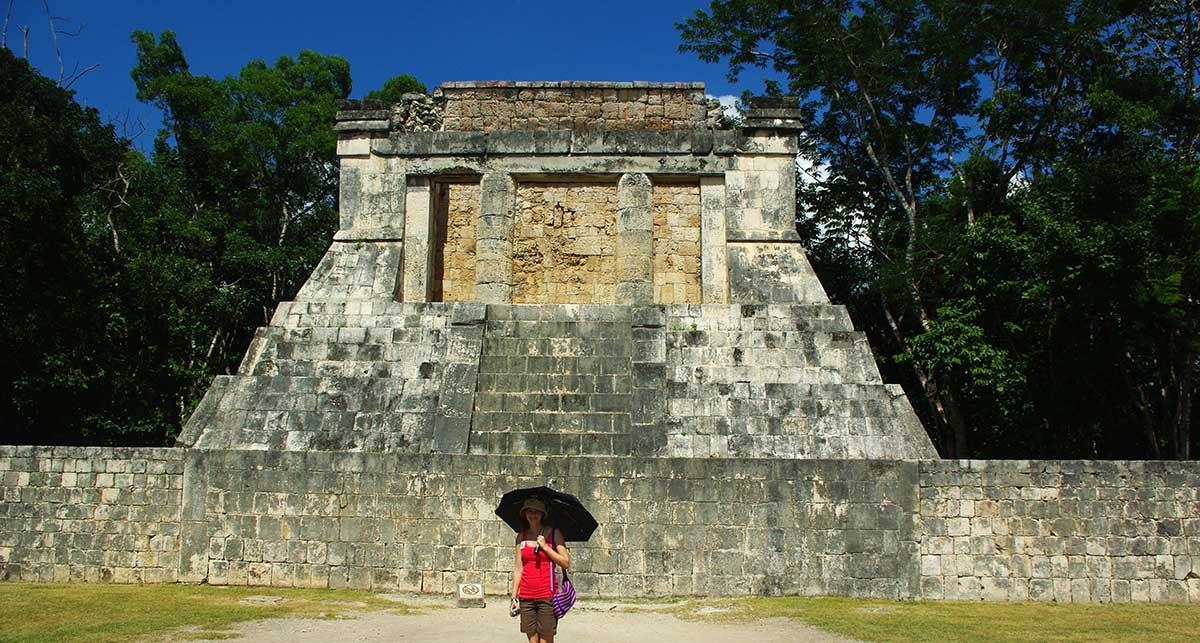
Can I stay overnight nearby when visiting Chichen Itza?
When visiting Chichen Itza, if you have your own transport, it may make sense to stay nearby which would allow you to get an early start and beat the rush of tourist coaches.
There are three Chichén Itzá hotels:
Hacienda Chichen Resort and Yaxkin Spa is only a few minutes walk from the entrance. It’s not cheap but it’s unbeatable for its location!
Villas Arqueologicas is also very close. The advertised back door to the ruins is no longer open but the reviews are excellent.
Mayaland Hotel & Bungalows is another hotel close to the ruins. It is close enough that some rooms have views of the pyramid. There is a shuttle to the ruins from the hotel. This hotel was started by Fernando Barbachano Peon, the person who started the tours of Chichén Itzá in the 1920s, so there is a lot of history linked to the ruins.
Piste is the nearest town of any consequence. There you will find La Casa de las Lunas, which also rates highly for location and is considerably cheaper (and more updated).
You might also consider Hotel Doralba Inn Chichen, which is a bit more basic but close to the Ik Kil cenote and only a 5-minute drive to the ruins.
There are many excellent hotels in Valladolid, which is about 50 minutes from the ruins. If you stay outside the city center, you can get some good quality hotels (or even haciendas) at a reasonable price.
How much does it cost to visit Chichén Itzá?
Entry is not cheap. The Chichén Itzá entrance fee is also a little confusing as you need two tickets. Payment must be in local currency.
As of December 2023, the Chichén Itzá cost for foreigners is MXN614. This is made up of MXN524 for the Ministry of Culture of Yucatán and MXN90 for the Institute of History and Anthropology of Mexico (INAH).
(If you are a Mexican national or a foreigner with residence in Mexico, the costs are much lower and entry is free on Sundays.)
If you join an organized coach trip from Cancun to Chichén Itzá, the cost may be between US$45 to 90 per person. Much will depend on the departure time, the length of the trip, and the additional stops and meals. Extra stops might include the famous Ik Kil, an ‘authentic’ restaurant such as Hacienda Chichen Resort, or even a stop in Valladolid.
The tour should include the admission fee to Chichen Itza.
What are the Chichén Itzá opening hours?
The Chichén Itzá open hours are from 8 am to 5 pm daily. The last entrance is at 4 pm. The earlier you arrive, the more chance you have of missing the crowds.
You should note that Chichen Itza is in the Yucatan, which is a different state from Quintano Roo. There is an hour’s time difference between the two states (odd, but fun to watch on your phone as you drive over the border of the states!) Yucatan is one hour behind Quintano Roo. And whereas this changed once a year due to daylight saving, Yucatan state scrapped that in 2023.
So, if you’re visiting Chichen Itza from Cancun or Playa del Carmen, Tulum, or any of the Riviera Maya holiday spots – check your timing before you book your tour.
Unless you have a good reason to do so, it may be worth avoiding the spring and fall equinoxes. The stairs of the Temple of Kukulcán (El Castillo) are famous for the moving snake-like shadows at this time of year. The number of visitors gets crazy and the crowds can be overwhelming!
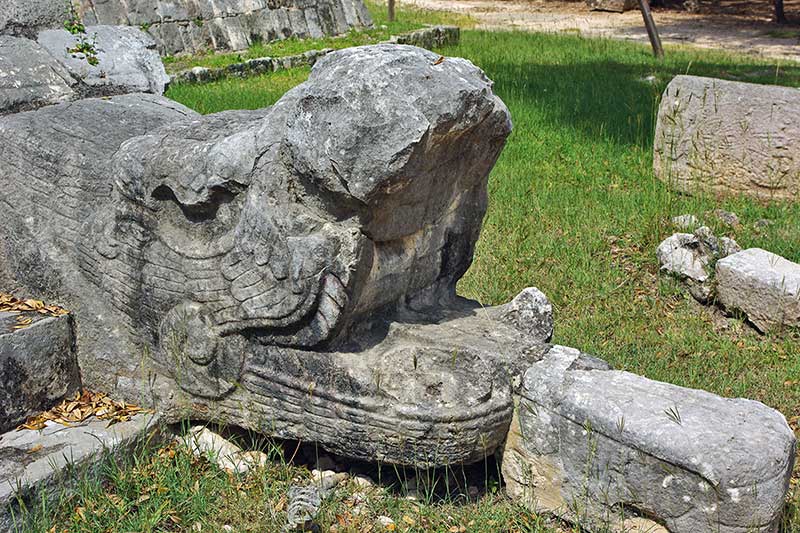
How long do you need when visiting Chichen Itza?
That depends on you and your interest in Mayan history. Tabitha can spend many hours exploring every nook and cranny, whereas Lesley and I are content to stroll and investigate only what takes our interest.
If you have the time to take a guided tour, you may want to allow 3 or even 4 hours. A casual stroll around the ruins might take between 2 and 3 hours. But, if you can only manage 1 to 2 hours, it’s still worth visiting Chichen Itza – you’ll may miss some of the sights but you’ll get great photos!
If you join a tour group you will definitely learn more. We joined a tour but the guide told us so much that was beyond what we were interested in, we left part way. If you join a small group tour, you could probably keep the guide under control!
Are there restrictions at the Mayan Ruins?
You are only allowed water on site to avoid litter and attracting unwanted wildlife.
Can you climb Chichén Itzá? – No! The site strictly prohibits climbing on any of the ruins or structures. Each year several tourists do so and get into trouble – and badly castigated on social media.
No drones are allowed. For some camera equipment you may need to buy a permit (for example, tripods).
What’s the best time for visiting Chichen Itza
Most people don’t have a lot of choice about when they visit Chichen Itza. Your vacation is when it is and you have to book your tour when you can. But here are some guidelines that may help, especially if you have your own transport.
The best months for visiting Chichen Itza are between November and April. Chichen Itza is in the Yucatan and summers can be fiercely hot. Mid-November to late March are the cooler months. Although it can still rain, you will also avoid the worst of the rainy season.
December, especially around the Christmas period, and early January are busy due to an influx of overseas (mainly American) tourists.
As Sunday is free for all Mexican citizens and foreigners with residence visas it gets very busy. It’s best to avoid Sundays if possible.
Most weekdays are as crowded as each other due to the coach tours.
So, when is the best time to go to Chichén Itzá? As early as possible. The gates open at 8 am, so try to be in the ticket queue at least by then.
Because of the distance and travel time from the coast, most trips don’t arrive for a couple of hours after opening. Plan your visit – which part you want to explore and where to take photos before you arrive, particularly those near the entrance. Enjoy the relative peace and quiet while you can. And then move further away from the entrance as the number of people increases.
Why? In 2022, it was reported that 2.6 million people visited Chichén Itzá!
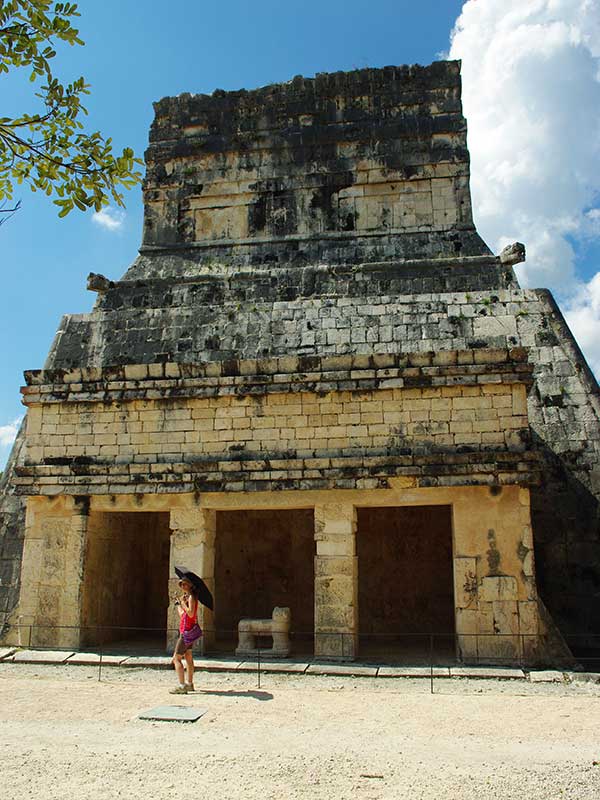
What is there to see when visiting Chichen Itza?
For many, Chichén Itzá is THE Mayan ruin. If you tell folks back home you’ve been to Ezdna, you may get blank looks. Mention Chichén Itzá and you’re more likely to get jealous glares.
The ruins at Chichén Itzá offer an immersive experience into Mayan history and culture. Exploring this UNESCO World Heritage Site allows you to marvel at their architectural achievements while also pondering over their complex cosmology and spiritual beliefs.
Unlike several Mayan ruins, Chichén Itzá isn’t just a pyramid. The core site is 2 square miles (5 square kilometers). It features a variety of structures and buildings, in various states of ruin dating back almost 1,000 years.
There are dozens of buildings, friezes, temples, and structures at the site. I’ll cover the ones that stand out if you’re on a limited tour:
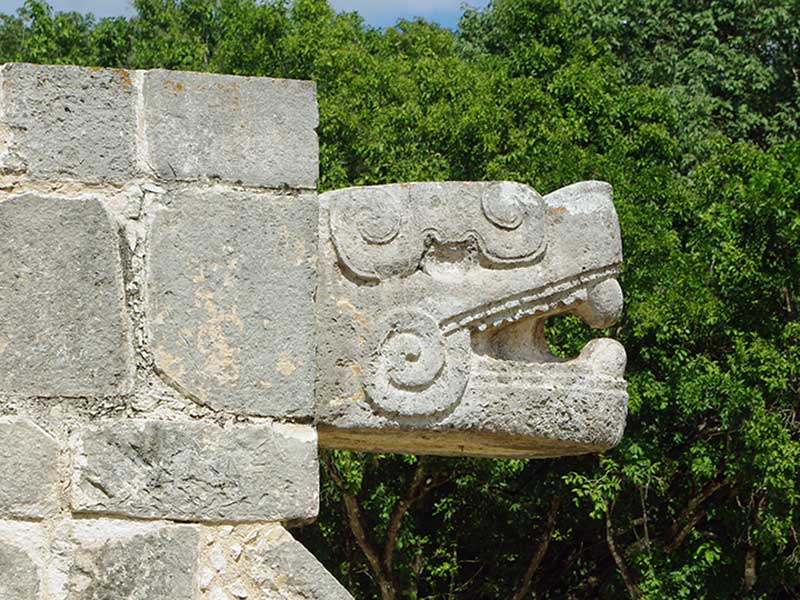
The Sights
Temple of Kukulcán (El Castillo)
As you approach Chichén Itzá, your eyes will be immediately drawn to the Temple of Kukulcan (also known by its early Spanish name of El Castillo). This is a magnificent pyramid that dominates the landscape and is the one from so many iconic photos. It’s what everyone who has heard of Chichén Itzá thinks of first.
Kukulcán was a Maya feathered serpent deity in many ways similar to Quetzalcoatl of the Aztecs.
The pyramid is about 98 feet (30 meters) high. It comprises nine square terraces, each about 8.4 feet (2.56 meters) high, with a 20-foot (6-meter) tall temple on the top.
The staircase is famous because, during the Spring and Autumn equinoxes, the northwest corner of the pyramid casts a series of triangular shadows that look like a serpent wriggling down the staircase. To some, this represents the feathered-serpent deity, Kukulcán.
Great Ball Court
There are 13 ball courts in Chichén Itzá. These were used for playing the Mesoamerican ballgame, the rules of which are unknown but from art, figurines, and friezes, it seemed to be a fairly violent and often fatal game. Look out for carved murals displaying images of the ball players.
The Great Ball Court is the most impressive and is located about 490 feet (150 meters) from the northwest corner of the Temple of Kukulcán. Measuring 550 by 230 feet (168 by 70 meters) it is the largest and best-preserved ball court in the Mesoamerica area.
At the far end of the Court is the Temple of the Bearded Man. Built into the wall of the Ball Court is the Temple of Jaguars.
Chichanchob (Red House)
This is one of the better-preserved structures on the site. Called the Red House due to its original color, there was still red paint visible in the 19th Century.
Among other features to look out for are:

- The Tzompantli, which is also known as the Skull Platform for its rather gruesome rendering of skull murals. This is indicative of Central Mexican influences.
- Temple of the Warriors, which is another large pyramid structure, with rows of pillars at the front and a Chac Mool figure on the top. (Chac Mool is a common stature figure, laying on its back, supported by its arms but facing 90 degrees away from the body.)
- The Sacred Cenote is a natural sinkhole believed to have been used for sacrificial rituals by the ancient Maya. It can be reached by following the sacbe or raised pathway that runs about 980 feet (300 meters) from the main center where Tzompantli and the Temple of Kukulcán are located. This was a sacred cenote and the center for pilgrimages for the Mayans. Many fascinating items have been found in the murky water, including human remains.
Old Chichen
A group of structures on the south side of the central site are called Old Chichen. This is where the majority the Puuc-style architecture can be found. Unfortunately, the area has been closed to visitors for some years but it is hoped it may reopen in 2024.
Discovery and Renovation of the Chichén Itzá Mayan Ruins
To say that Chichén Itzá was discovered in 1841 is incorrect – it was never lost! The local Mayans knew and visited the site for centuries after it fell from power as it held significant spiritual value for them, especially Cenote Segrado (the Sacred Cenote).
It was re-discovered by the West in late 1841 by the explorer J.L Stephens. He visited several Mayan ruins in the Yucatan Peninsula as he traveled around the area, notably Uxmal. His book published in 1843, called Incidents of Travel in Yucatan, brought these ruins into the public view.
With interest in this ‘unknown’ Mayan civilization growing, more people visited. Some of the visitors took photographs and made drawings that have been invaluable in the restoration work since. Photographers such as Désiré Charnay (1860), Augustus Le Plongeon and his wife Alice (1875), followed by Teobert Maler and Alfred Maudslay in the 1880s all contributed greatly to our knowledge of what these ruins looked like.
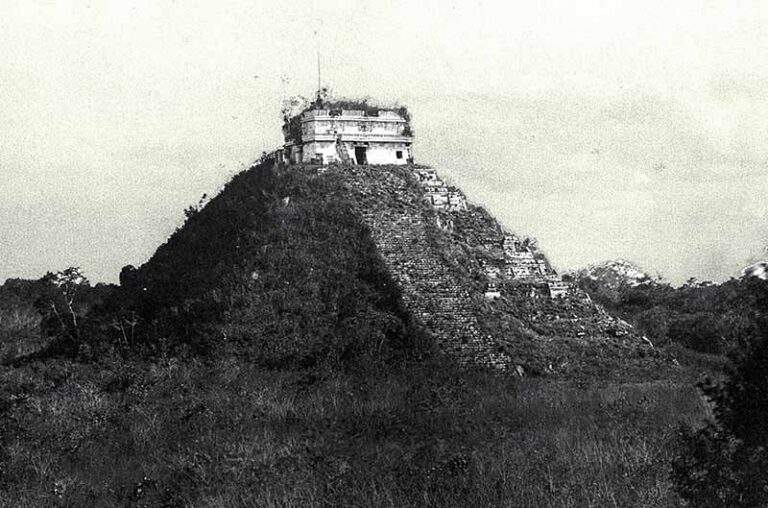
‘Proper’ study at the archaeological site of the ruins begins
In 1894, Edward Thompson (at that time the US Consul for the Yucatan) bought Hacienda Chichen, along with the plantation that included the ruins of Chichén Itzá. He spent the next three decades exploring the area, discovering several famous sites.
Thompson dredged Cenote Segrado between 1904 and 1910, finding many items of gold, jade, and pottery. He also found human remains, suggestive of human sacrifices.
In 1913, an archaeologist named Sylvanus Morley proposed to the Carnegie Institution, an institution set up in Washington in 1902, that there should be a long-term archaeologic study at Chichén Itzá. Although the proposal was accepted, the Mexican Revolution and World War 1, resulted in a delay of nearly 10 years.
(During this delay, Morley had an interesting time acting as a spy in Mexico on behalf of the US government! Harris and Sadler (2003) who researched his espionage activities wrote that Morley was “arguably the best secret agent the United States produced during World War I”.)
A ten-year permit was granted in 1923 to the Carnegie Institute by the Mexican government for the research at Chichén Itzá. This allowed them, headed by Morley, to begin excavations in earnest.
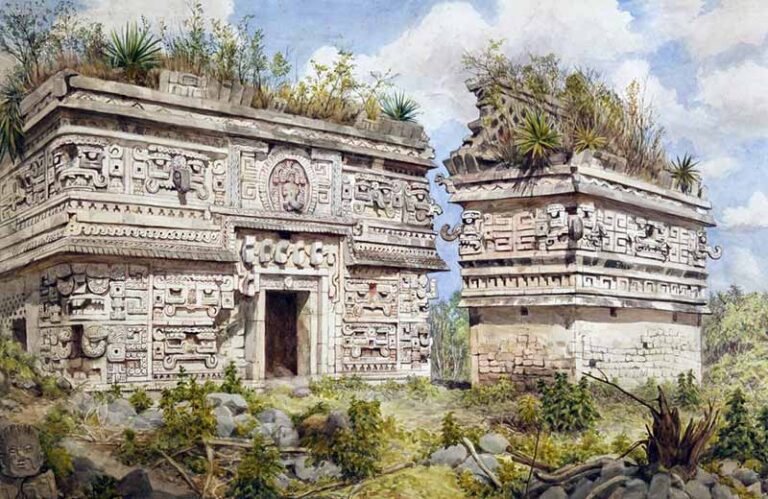
Only ruins covered in dirt and vegetation
At this stage, most of the buildings and other structures were hidden or covered by dirt and vegetation. Some had already collapsed, even since being photographed barely 60 years earlier.
The Mexican government had started restoring the pyramid Kukulcan Temple (also known as El Castillo).
From 1924 to 1940, the archaeologists working for the Carnegie Institute uncovered or worked on, among others.:
- Complex of a Thousand Columns
- Temple of the Jaguar
- Temple of the Warriors
- Temple of the Chacmool
- El Caracol
Previously viewed as an ancient Mayan city, it became apparent that while several Mayan building styles were involved, such as Puuc, Chenes, and Rio Bec, it was not just Mayan. What was unexpected were Toltec influences coming from Central Mexico.
During this time, Morley worked almost exclusively copying all the inscriptions he could find. However, although Morley was dedicated to the research of the site, his writings were not just scholastic. He also wrote popular works on Chichén Itzá and the Mayans, which boosted the thirst for knowledge and fascination for the site and its people.
The growth of Tourism at Chichén Itzá
Morley was also aware of the tourism potential and supported the restoration of the buildings. His friendship with a Yucatecan, Fernando Barbachano Peón nurtured this vision.
At the same time, a group of Yucatecans headed by Francisco Rul – the father-in-law of Peón, approached the Yucatan Governor, Felipe Puerto, to build roads to famous monuments to increase tourism, including Chichén Itzá.
In 1924, Peón set up Mayaland Tours. This was a novel venture, organizing tourist trips lasting five or six days visiting Chichen Itza. On some trips, Morley would escort the tourists around the digs.
It should be noted that a six-day trip to Chichén Itzá in the 1920s was not the faint-hearted. Although guests could stay at the Hacienda Chichen, traveling on the new roads as well as conditions at the archaeological site were primitive at best!
In 1926, the Mexican government charged Edward Thompson with theft. They claimed that he had stolen artifacts from his dredging of Cenote Segrado 15 years earlier and then shipped them back to the US for personal gain. As a consequence, they confiscated Hacienda Chichen and its lands, which included Chichén Itzá.
Although the charges were dropped in 1944, Thompson had died in 1935. The property was returned to his heirs who, in the same year sold it to Morley’s friend, Fernando Barbachano Peon.
The Yucatan State purchased Chichén Itzá in March 2010.
In the decades since Morely and his crew worked to bring much of Chichén Itzá from under dirt and vegetation, a lot of work has taken place. It continues to this day, with amazing new finds being made each year.
Mexico’s National Institute of Anthropology and History (INAH) has supervised these projects. INAH continues with its restoration and recovery of Chichén Itzá.
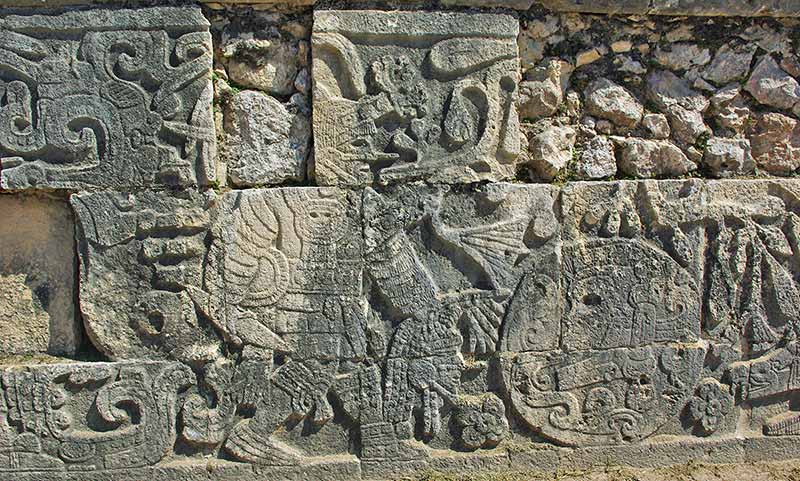
Is visiting Chichen Itza worth it?
This is a personal view. When we visited Riviera Maya 12 years ago, the chance of visiting Chichen Itza was a dream come true. For us, the long coach trip, the crowds (much smaller in those days!) and the heat were worth every second. This was one of the highlights of our three-week holiday.
Having lived in the Yucatan for four years, the thought of the crowds takes away some of the buzz. I know of and have visited awesome Mayan ruins in great conditions, for far less expense, and much smaller – if any – crowds.
But there is no getting away from the fact that Chichén Itzá is … Chichén Itzá. It was voted one of the Seven Wonders of the World for a reason. It is a World Heritage site. If I visited Egypt, I would have to visit the pyramids, knowing in advance that they are tourist hot spots and absurdly overpriced for what I’ll see.
So – if you’re prepared in advance for the crowds, the heat, the cost, and the other potential issues – then absolutely – visiting Chichén Itzá is definitely worth it. Don’t miss it!
Cenotes near Chichén Itzá you can visit
If you’re on an organized tour or visiting by car, you can make your day complete by adding a trip to a cenote.
The Yucatan Peninsula is the best place in the world to visit for cenotes as it has such a large number open to the public – unfortunately, there is only one near Chichén Itzá. The others are at least 20 to 40 minutes away. The fees can be higher than they should, so I’ve not given details. If you want to learn about other cenotes in the Yucatan please click here.
FAQs about Visiting Chichen Itza Mayan ruins
Where are the Chichen Itza Mayan ruins?
Chichén Itzá is about 122 miles (or 197 km) from Cancun, or roughly two and a half hours by coach. The ruins are 75 miles (or 122 km) from Merida, which is one and a half to two hours, by car. Valladolid is only 28 miles (45 km) away or less than 50 minutes by car.
There is a Mayan Tren station near Chichen Itza.
What is the entrance fee to Chichen Itza Mayan ruins?
This is one of the most (if not the most) expensive ruins to visit in the Yucatan. For foreigners the entrance cost is MXN614. This is MXN524 for the Ministry of Culture of Yucatán and MXN90 for the INAH. It is safest to bring cash to pay this, even though it says cards are acceptable.
Can I climb any of the buildings at Chichen Itza Mayan ruins
Absolutely not. Don’t even try it. Each year, there are arrests and the culprits are now often harrassed and attacked by tourists and guides as they are led away! Not worth it.
How long will a visit to Chichen Itza take?
That is entirely down to how interested you are in the ruins. You can easily get some great photos in 1 to 2 hours. A better length of time is 2 to 3 hours. But the Yucatan sun can make that a difficult task during the hottest months.
When's the best time to visit Chichen Itza Mayan ruins?
Ideally, arrive as early as possible to beat the coach tours.
As Sunday is free entry for Mexican citizens (and foreign residents, it’s best to avoid Sunday completely.
You may not have much choice if you are on a tour.
The best months to visit are from November to April.
What should I bring?
Cash.
Sunscreen.
Hat.
Mosquito Repellent.
Good, strong shoes.
Patience?
Camera!
Are Chichen Itza Mayan ruins close to a Mayan Tren Station?
Yes, there is a Mayan Tren station dedicated to the Chichern Itza ruins so tourists can easily access them from the Riviera Maya and Merida.
What is so special about Chichen Itza?
What makes Chichen Itza so special is a mix of its ease of access from the Riviera Maya and places like Cancun, Playa del Carmen and Puerto Morelos, and its unique buildings.
It being special means there are always crowds but it’s big enough not to be a problem.
But it’s been called one of the Seven Wonders of the Modern World and its a UNESCO World Heritage site.
What is the story of Chichen Itza?
The history of the rediscovery of Chichen Itza is a fascinating – almost Indiana Jones – story involving a famous US spy in the First World War and some old ruins – read more about the story here.
Cenote Ik Kil at Chichén Itzá
Cenote Ik Kil is only 8 minutes by car or coach from Chichén Itzá. This was the first cenote we ever visited and it was part of a coach trip from Cancun to Chichén Itzá. This is an iconic semi-open cenote: tall, steep walls, vines hanging down, and deep, dark waters!
The facilities are good but it can get a bit crowded if you arrive at the same time as a coach trip. Having said that, it is a large cenote, so it may not feel overly crowded.
The price to enter is MXN180. (Bring Mexican pesos, it’s cheaper than risking the exchange rate!)
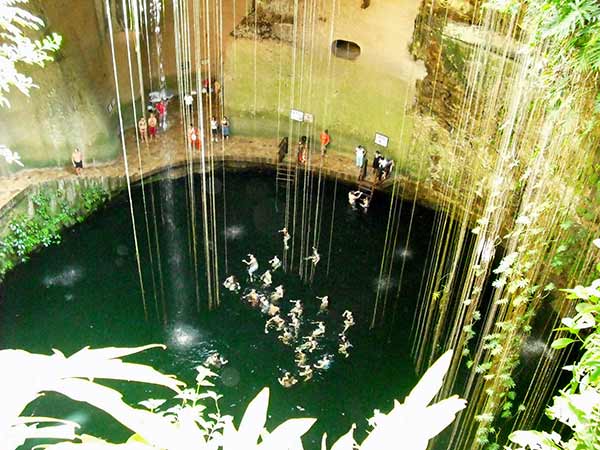
If you want to learn about other Mayan Ruins in the Yucatan, click here.
Click here if you want to learn Everything there is to know about Visiting Uxmal.
David H
After spending months in places like Playa del Carmen and Ajijic (near Lake Chapala, Guadalajara), my family and I have been living for the past four years in the Yucatan and enjoying this fabulous part of Mexico.
I've written many travel blogs for other travel sites over the years before starting Wonky Compass. I have three books published on Amazon.
Copyright 2024 www.wonkycompass.com